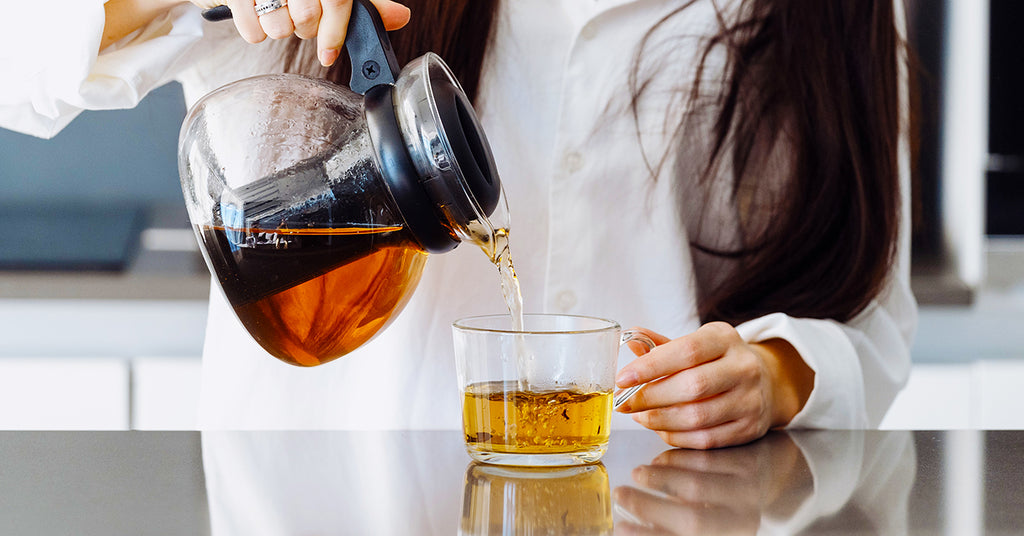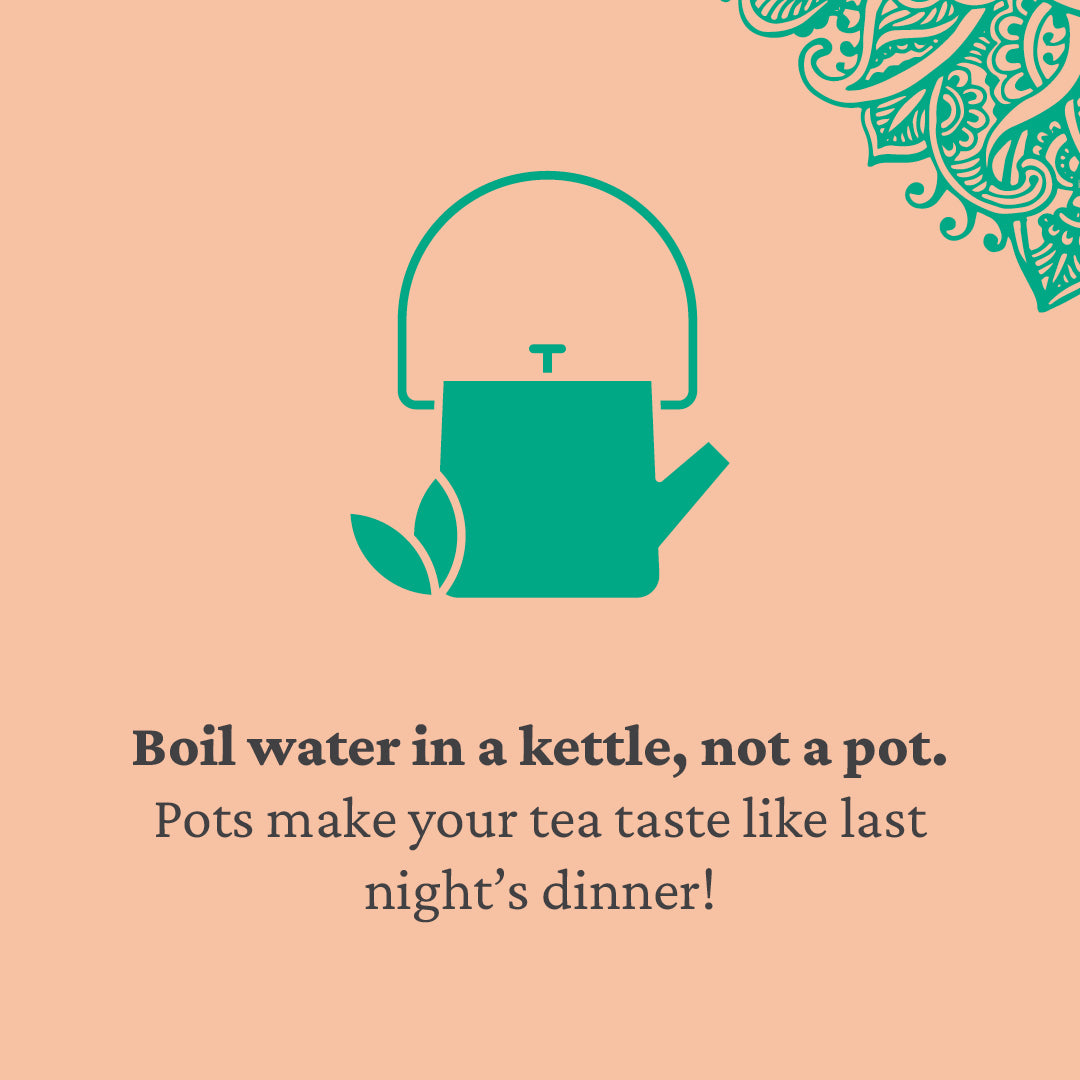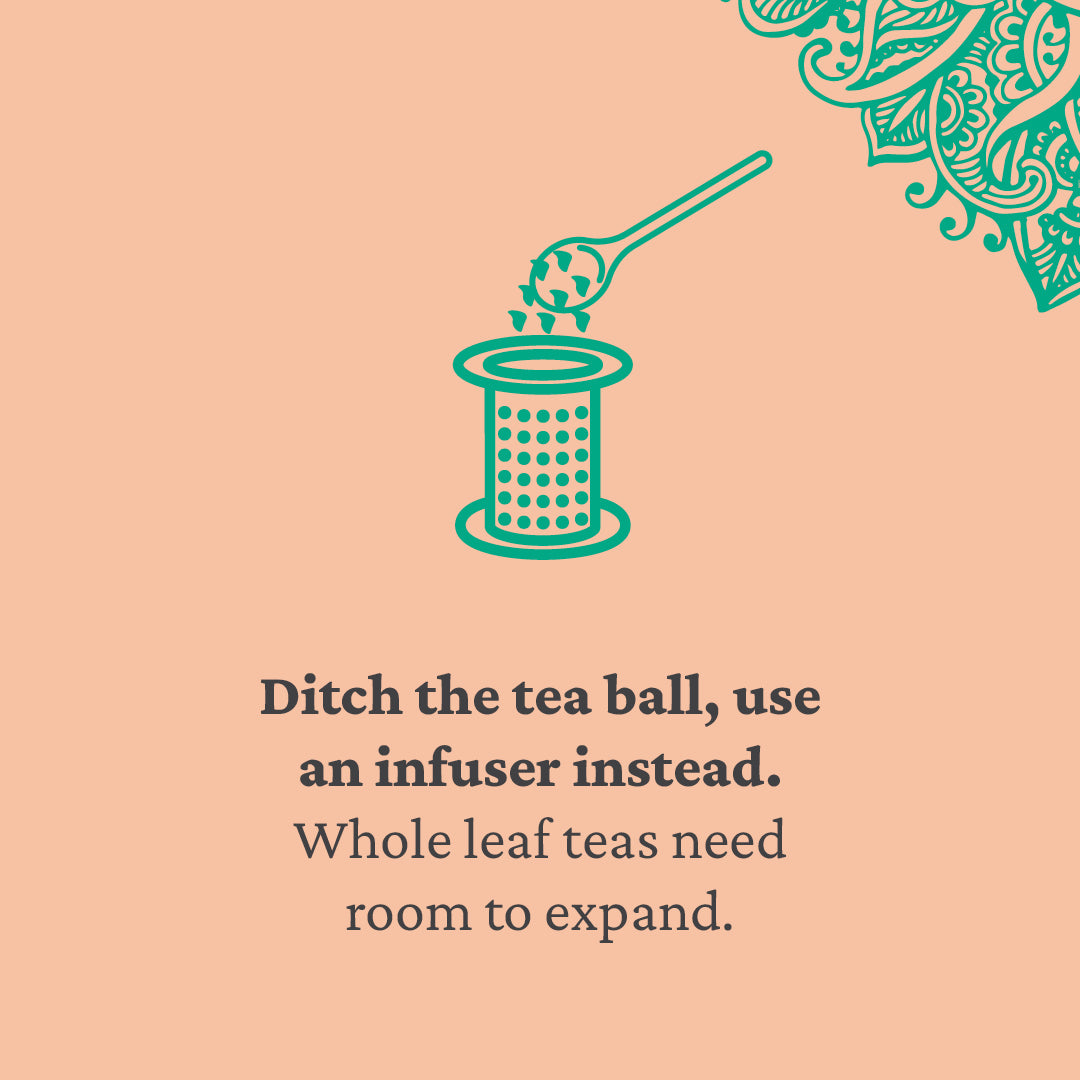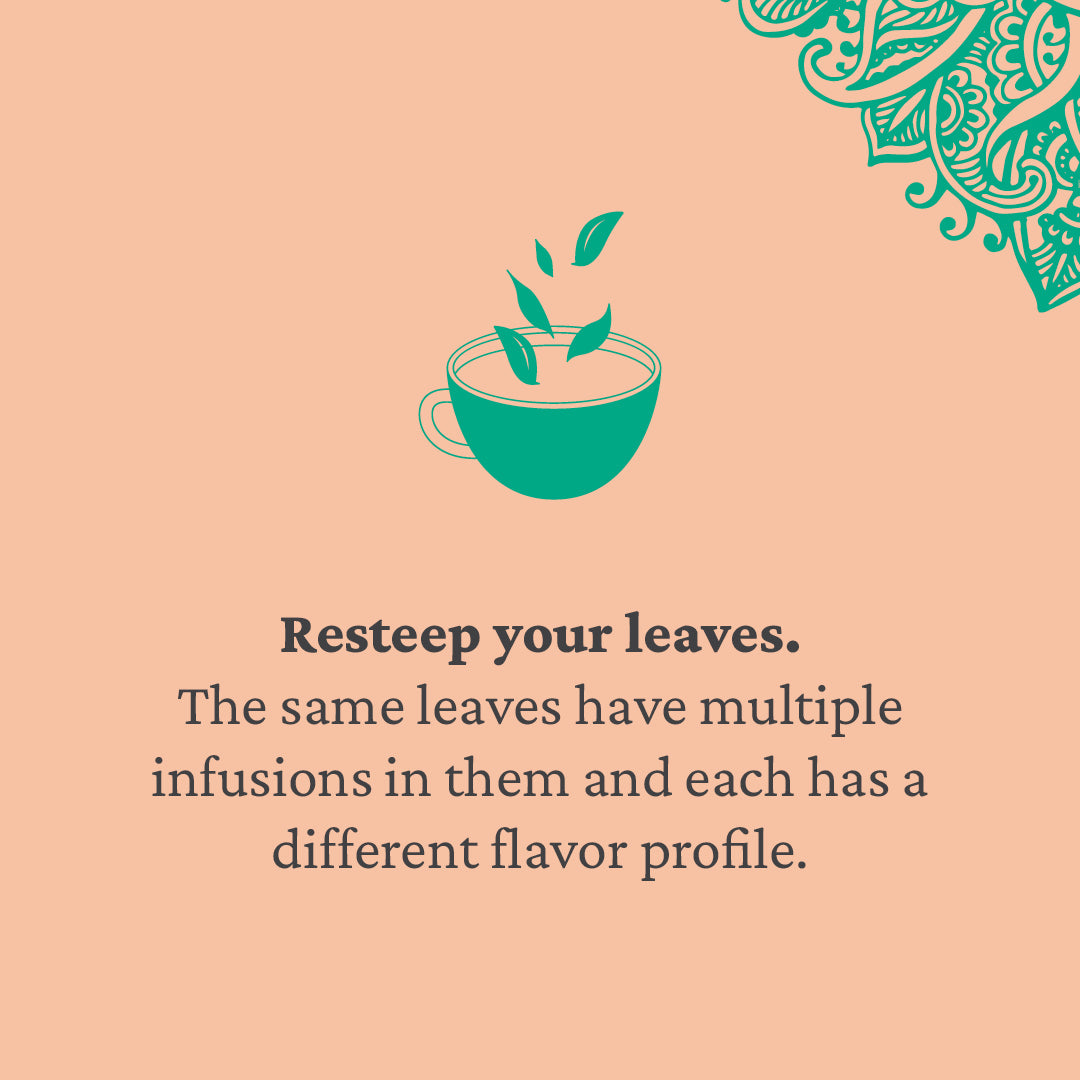6 Tips for Brewing Tea at Home

For those times when you want tea house quality steeps in the comfort of your own home, we’ve compiled our top tips for making the most of your at-home tea brewing experience.
1. How should I boil water for tea?
Tea making is best done in an actual kettle, not a pot. If you use the same pot that made last night's chili, the overpowering flavors from unwanted spices are sure to end up in the water, masking the subtle nuances of premium tea. You also don't want to use a pot that imparts a metallic taste into tea, so get a dedicated kettle. If you want to go the extra mile, electric kettles with variable temperature controls are ideal, so you can get the temperatures dialed perfectly to suit each tea you brew. Of course, for thousands of years people didn't do this, so you don't need to, but it is nice.

2. What is the best teapot for loose-leaf tea?
Anything that is ceramic or glass will work best--even if you don't have an actual teapot available, a mason jars or any other sturdy pitcher or even measuring cups can work. In a pinch, I just use two mugs. One is for steeping the tea, and then pouring into the second. If a little tea leaf winds up in the cup, that's okay. You can always use a strainer to prevent unwanted leaves in your mug.
A note on cast iron teapots: While they are aesthetically wonderful, one thing to note is that they get seasoned over time by the brew, so it's best to have them dedicated to one type of tea for optimal drinking experience.
3. Do I need a tea ball?
Ditch the tea ball, we say! Loose-leaf tea wants to expand, and when it's in a tea ball, the tea gets wadded up. That means the outer leaves over-steep and the inside doesn't steep enough. Free your leaf and get the most of it by putting straight into a teapot or use a teapot with an infuser inside! A wide and deep tea infuser is great for easy brewing and cleanup. Look for one that fits in an array of cups, mugs, and glasses and lets the tea breathe and open up.

4. How long should I steep my tea?
This depends on the type of tea you’re steeping. Typically a tea’s packaging will include instructions for water temperature and steep time. You’ll find that on every package we sell, and it’s always on our website too. The most important thing is to stay with your tea while it steeps. Don't start steeping it and then walk away. Two reasons: 1) the benefit of tea is as much the ritual of making it as drinking it, and 2) you're more than likely to forget about the tea and make a bitter and unpleasantly strong brew if you leave it. Set a timer on your phone or microwave to ensure you stick to the steep time desired.

5. How many times can you re-steep tea?
One of the best things about making tea at home versus buying it at a tea shop or coffee house is that you get to re-steep the tea. And many times, the best flavors come out in the second or third steep. This holds especially true for white, green, oolong, and pu’erh teas. Generally, black teas can give everything they’ve got in the first steep, but a strong black tea can still give a cup or two of lighter brew after the first one, that can be especially welcome at later hours in the day.

6. Can I compost my tea leaves?
Absolutely! They are completely biodegradable since they are literally the leaves of a tree. After they're harvested, nothing is added--only water is removed. So whenever you’re finished steeping, composting is the best way to dispose of your used up tea leaves without adding to the landfill. In fact, as a green or nitrogen-rich component of compost, tea leaves balance out the carbon-rich “brown” materials. They’ll make your compost healthier!

What are your tips for the optimal brew-at-home routine? We'd love to hear from you. Leave a comment below!
Blog Author:

Raj Vable, Founder
He has been confounded by the leaf since his first transcendental encounter with white tea in 2010. Three years later, he started Young Mountain Tea to bridge his budding tea obsession with his interest in traveling in the mountains and previous experience creating job opportunities in rural India. He revels in working across cultures and can be regularly found trying to get the rest of the team on board with another outlandish tea project. His favorite teas remain white, and he’s always searching for the next cup of magic.


Comments on this post (7)
Fantastic tips for brewing tea at home! The step-by-step guide is so helpful, making it easy to enjoy fresh, flavorful tea every time.
— sbrewingcompany
Thanks for these great tea-making tips I’ve always loved tea and this tutorial has really taken my tea-making abilities to the next level. Information about water temperature, steeping time, and experimenting with flavors has made my daily tea ritual much more enjoyable. I can’t wait to try these techniques.
— sbrewingcompany
Where do you put the tea leaves (in the infuser) in between the first & second steeps? I’m thinking about the logistics of taking the infuser out and how it would likely drip all over.
— Allison Elizabeth Koszyk
And my question for y’all about Raj’s recipe. Making the larger amount, is it really as good the second or third day? It’s so precious, I don’t want to do anything to diminish it!! (And P.S. thanks for the great enlightening article about caffeine. Who knew??)
— Nancy-Laurel Pettersen
Amen to room temperature steeping!! Yesterday for the first time I followed Raj’s recipe for sun tea with my wonderful favorite Indi’s Gold, with the exception that I did a one-cup amount rather than the larger amount in his recipe. OMG, it was even more round and nuanced in flavor than steeped hot, and it seemed like I was able to find the flavors on my tongue better at room temp. It was so much fun that I actually took photos of the jar’s journey around my apartment, chasing the sun as it shifted from window to window. And I got a satisfying second and even third cup from it — I guess the leaves not having been “spent” in hot-hot water. What a joy!!
— Nancy-Laurel Pettersen
Tim great question! We will be releasing a blog on this shortly. We recommend using tap water in a glass jar for 2 hours. We prefer room temperature steeping to cold water, and use 10 grams (roughly 1/3oz) to 48 oz mason jars. Happy steeping!
— Natalie
Raj—Do you have any suggestions about cold-brewing your wonderful black teas?
— Tim Guirl